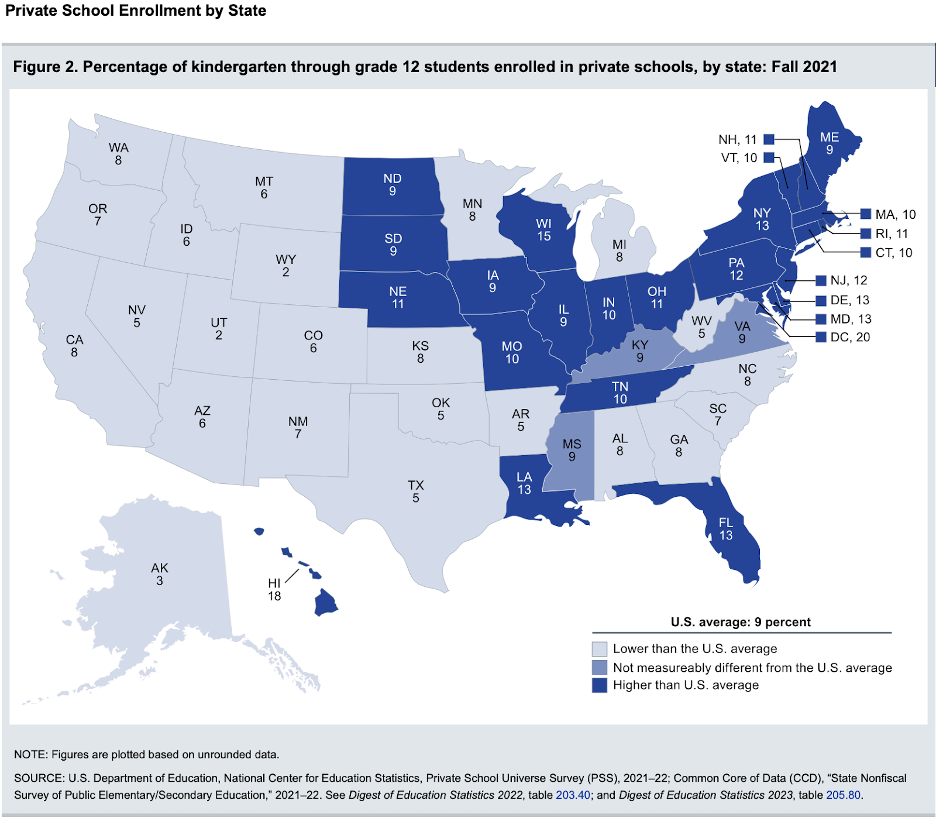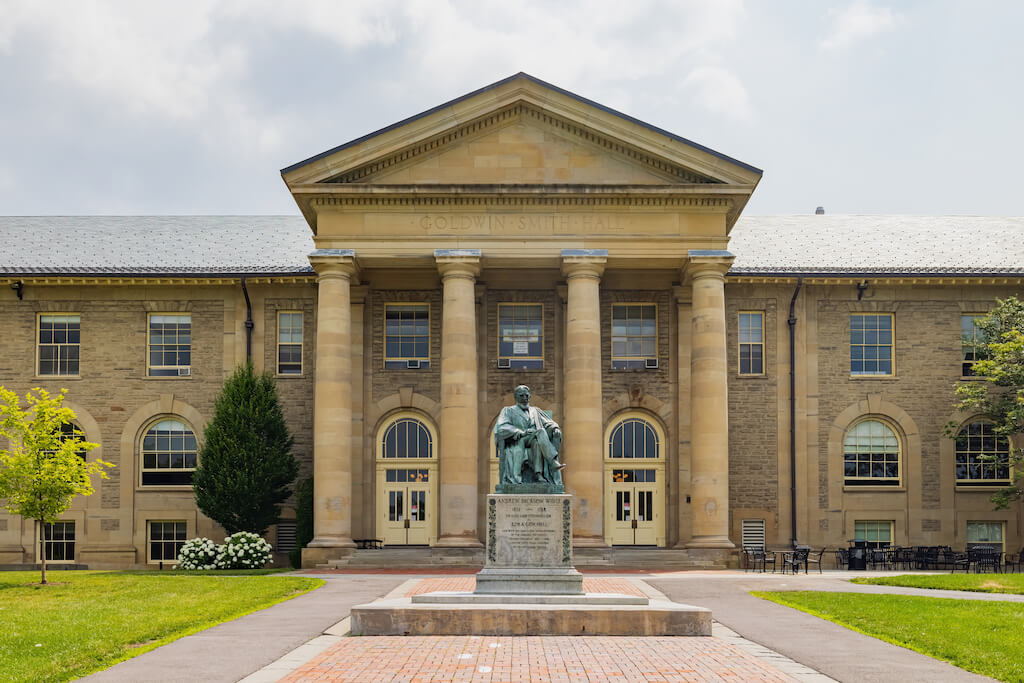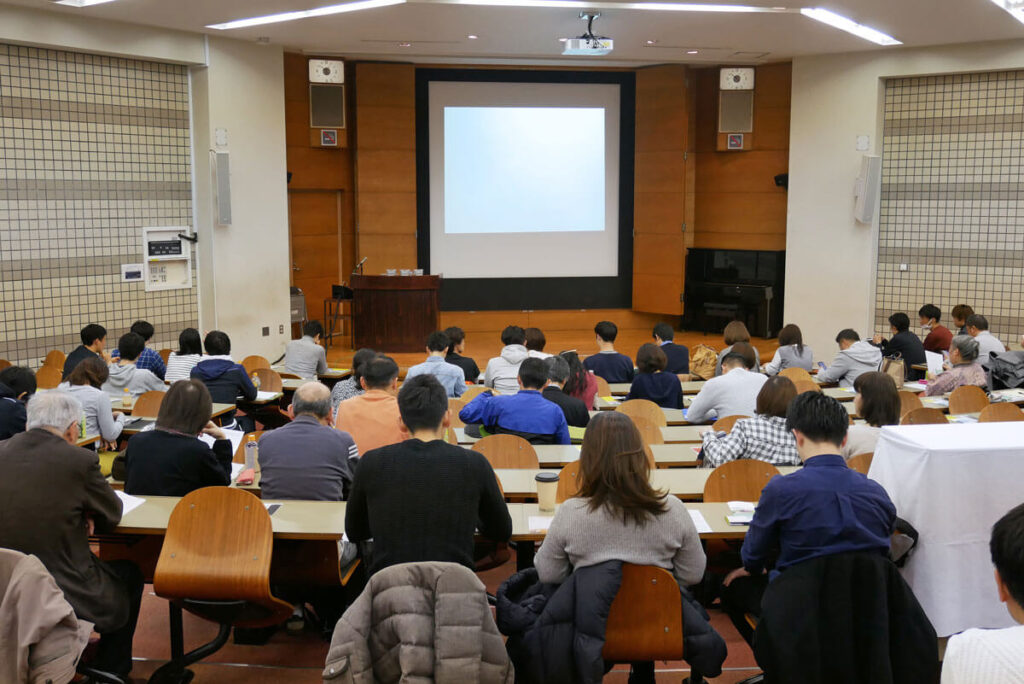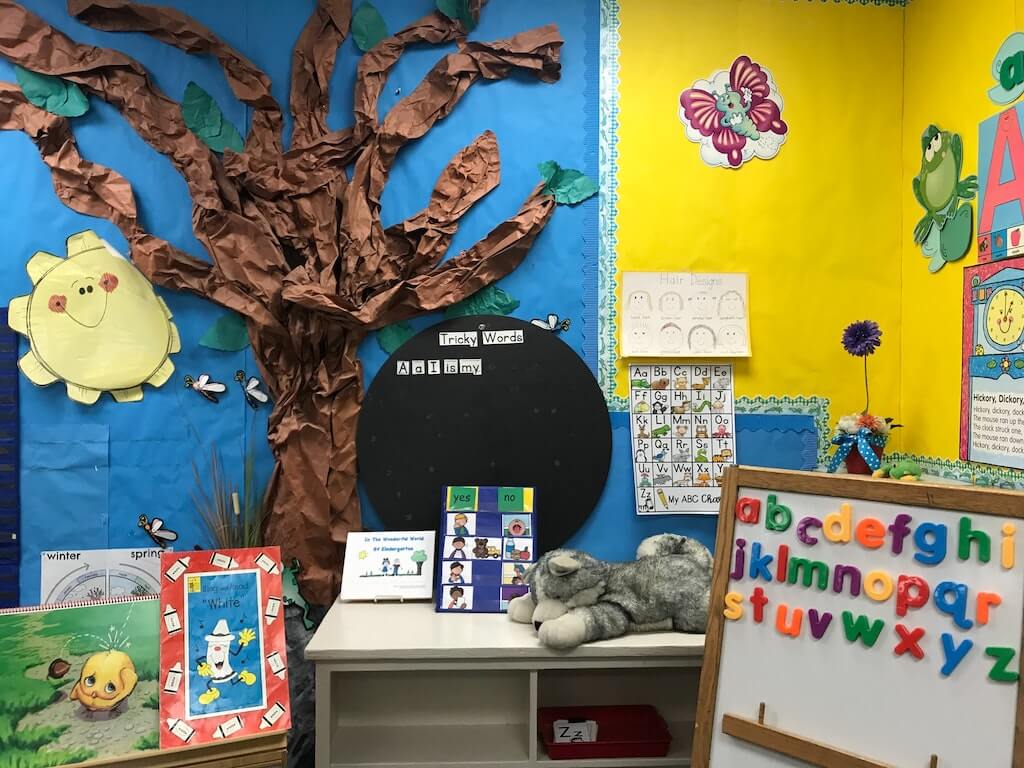When we talk about strategic planning for schools, there is no single formula for the successful operation of a private school, and there is no one size or orientation that defines all private schools. According to the National Association of Independent Schools (NAIS), the median enrollment for private schools nationwide as of 2024 is 638.
Independent school enrollments totaled 4.7 million in 2021, the last year reported by the National Center for Educational Statistics. That total represented approximately nine percent of combined public and private enrollment in 2021. Over a 10-year period from 2011 to 2021, total private school enrollment increased by 5% while remaining at 9% overall (see chart below).

Enrollment by school orientation varied more than the aggregate over the same 10-year period. Catholic school enrollment decreased from 1.9 million to 1.7 million. Enrollment at other religious schools increased from 1.7 million to 2.0 million, and enrollment at nonsectarian schools increased from .9 million to 1.1 million during the 10 years.
There is a wider disparity in enrollment by state in the U.S. The states with the highest percentage of private school enrollments are the District of Columbia (20%), Hawaii (18%), and Wisconsin (15%). My home state during my formative years, Maryland, is tied with four other states (NY, DE, FL, and LA) at 13% (see chart below). Pennsylvania and New Jersey are close behind at 12% each.
Planning Horizons
I attended an independent school in Maryland from 7th to 12th grade thanks to the generosity of donors who provided scholarship assistance for students like me. I later served on its Board of Trustees in the early 1990s and was asked to co-chair its first Strategic Planning Committee. The process took a couple of years and included a faculty co-chair. The plan the Board and school leadership approved was superseded by another plan less than ten years later.
While strategic planning is more ingrained with private schools and colleges today than it was three to four decades ago, education has changed thanks to greater access to technology and information. An independent school education today is not the same as an independent school education 20, 30, or 40 years ago. Hopefully, independent schools will continue to follow their founders’ original missions and consider the needs of their local communities and their abilities to make a difference in the lives of all their students when they strategically consider their future.
Students entering an independent school pre-K or kindergarten class this year will graduate in 14 or 15 years. Are today’s school leaders and boards thinking about what their schools will look like when these young students graduate? What are the major challenges for the sector today, and those that private schools will encounter in the future? Is it reasonable to look out 15 years when many schools have been around for 50 to 100-plus years, and few committees are good at planning for more than 1-3 years?
I believe the answer is an emphatic yes. Changes in education don’t happen overnight. Planning for the future beyond three or four years leads to better planned changes and better outcomes.
For schools with an existing strategic plan that may not extend over a similar period, I would build upon that plan and divide it into three multi-year parts. I would consider a short term of three to five years, a medium term of six to ten years, and a longer term of 11 to 15 years. The short term should always have a corresponding set of financial projections.
Over the years, regardless of the institution or corporation I am analyzing, I have found it difficult to create a meaningful set of financial projections beyond three to five years. There are too many independent variables with a wide range of possibilities to consider. At the same time, it is more than reasonable to develop longer-term financial targets, such as an endowment balance that is two or three times the school’s current balance.
It’s not unusual for an existing strategic plan to have a catchy name or phrase. My advice is to drop the name until you build the new plan. It’s amazing how catchy names or titles can unconsciously influence the outcome of committee members assigned to build or update the plan.
Areas of Focus
Mission, Vision, and Values Statements
Over the years, I’ve found it useful to have a page at the front of the strategic plan that includes the institution’s Mission Statement as well as its Vision and Values. Reviewing and revising these statements is generally not the purview of the Strategic Planning Committee. However, those charged with building a Strategic Plan should ensure the plan conforms to the school’s Mission and Vision. These statements can also be included in the introduction.
Introduction
Every successful strategic plan begins with a story that honors the history, values, and spirit of the institution it serves. As the strategic planning committee embarks on this critical work, it should begin by articulating the school’s story: how it was founded, what it has become, and what it aspires to be.
The introductory narrative should reflect not only the milestones and traditions that define the school’s past but also the culture, character, and community that shape its present. Institutions that understand who they are and how they are perceived can more easily form the foundation for determining where they need to go.
The introduction to the strategic plan is a vital opportunity to articulate the school’s identity and reputation in the local and regional community. How do families describe the school when they recommend it to others? What are the hallmarks of a graduate? What differentiates the school from its peers, not just in programs, but in spirit and purpose?
By weaving these elements into the plan’s opening, the committee anchors the strategic priorities that follow in a clear sense of institutional mission and brand. It becomes more than a roadmap for operations—it becomes a vision rooted in legacy, aligned with values, and oriented toward a bold and sustainable future.
The Market and Competition
Most independent schools serve a local or regional market. It is important to understand the reasons why parents in a market select your school as the place to educate their son(s) and/or daughter(s). It’s also important to understand the current and projected economic trends of your market area. Among the questions that Board committees and independent school teams should ask are:
- What is the size of your local or regional independent school market (i.e., how many students are currently enrolled in area independent schools?)
- Is your market large enough to continue growing or maintaining the number of full-pay families needed to support the area’s existing independent school enrollments?
- What are the projected demographic trends (birth rates, in/out migration, income levels) in the school’s recruiting area for the next 5-15 years?
- Who are the schools that your school competes with for students?
- What is your school’s recruiting advantage? Is it the list of colleges your graduates attend? Is it your small class sizes? Is it the quality of your faculty? Is it the diversity of your students? Is it the co-curricular activities your school offers (i.e., sports and the arts)?
- What does the community believe the school stands for?
- What are your competitors’ recruiting advantages? Are those advantages sustainable?
- What do prospective parents say during school tours or interviews that signal their perception of the school’s brand?
- Are local public schools improving their offerings (e.g., magnet programs, IB/AP curricula, facilities, teams)?
- Can the school broaden its market by offering transportation to families in nearby counties?
- Can the school broaden its market by offering boarding to upper school students?
It’s important to revisit these market questions regularly. Competitive positioning isn’t static. Schools should periodically survey prospective and departing families, track local real estate and income trends, and benchmark against peer schools to keep market data fresh.
If the committee concludes that the school needs to focus more on branding, I recommend including Branding and Reputation Management as a separate section in the plan, since it acknowledges brand as a strategic asset.
I have written about private school tuition discounting in the past. According to the National Business Officers Association (NBOA), the national average discount rate for independent schools was 18 percent in 2021. I believe it is higher than that today. And while 18% may be the national average, rates can be very different by region or city.
I am not a fan of tuition discounting. The practice has decimated the financial stability of many tuition-dependent private colleges, where the national average tuition discount rate for incoming full-time first-year students exceeds 58 percent. Private schools should consider that as they analyze their pricing strategies.
If your market is impacted by tuition discounting or the offers of merit scholarships to attract full-pay students, you’ll know. Does your school offer similar merit scholarships or tuition discounts? Schools must be aware of their own discounting practices and how they compare with competitors. If the information isn’t tracked, it should be.
Can your school survive without offering similar scholarships? That depends on your competitive position in the market. The way to avoid steep tuition discounting is to offer lower tuition than your competitors and/or differentiate your curriculum and other offerings. In some markets, that’s easier said than done. Nonetheless, it’s important to understand the depth (amount of discount) and breadth (the grades where discounts or merit scholarships are offered) of the problem.
Are there alternative choices in your market, like home-schooling, online independent schools, or charter schools that have increased their enrollments as well as their percentage of enrollments that you should include in the market analysis? Are they impacting your institution’s market share? As tuitions continue to increase and the addressable market remains flat or declines, some of these options may be attractive to parents who believe the independent schools’ tuitions are no longer affordable.
Analyzing Your Institution’s Tuition and Enrollment by Pay Type
Tuition
Gone are the days when independent schools could increase tuition above the average increase in income for local families. Full-pay enrollments are linked to a combination of perceived quality and families’ ability to pay. How much higher it can go depends on your targeted number of full-pay students. If your school wants to increase the number of full-pay students, is there room in the market for an increase in the tuition price, or will an increase require taking market share (students) from existing schools?
Strategic enrollment planning should weigh the tradeoff between increasing headcount and maximizing net tuition revenue. Sometimes, a smaller, better-paying student body is more sustainable than full enrollment with high aid dependency.
Annual tuition increases are easier to approve when Boards and school leaders don’t have a vision of the compounding effect of that increase over time. The U.S. wealth gap is increasing. In many markets, private school tuition may have reached the maximum for a family’s after-tax cash contribution.
To illustrate this point, I created two examples of a steady increase in tuition over time. In the first chart, this year’s tuition is set at $35,000. I increased it by 3% a year for 10 years. In year 10, the tuition is $45,667. Is this sustainable in your market?

In the second chart, I kept the tuition at $35,000 but increased it by 5% a year for 10 years. In year 10, the tuition is $54,296. Will that number be sustainable in 10 years? Will your market support your existing cohort of full-pay families if tuition creeps up by that much annually?

If your school manages its expenses to a 3% annual increase, will the competition pass through a higher tuition increase and collect more cash, or will it be forced to discount because its tuition is priced too high?
Some of the strategic tuition questions your institution should attempt to answer are listed below.
- Do you want your school to be the highest tuition price point in the market, or is there another level that maximizes your overall enrollment?
- Can your school’s perceived quality justify your price point?
- What is the school’s value proposition compared to competitors?
- How is the school perceived by prospective families and the wider community?
- Is the school’s brand aligned with mission, vision, and daily experience?
- Does the school have a long-term marketing and communications strategy?
- Can you break even at that price point?
- Will your tuition impact total full-pay enrollments negatively or positively?
- Will your tuition impact student retention if families only have so much money set aside for private school?
- Do you know the percentage of students who begin in kindergarten that persist through 12th grade?
- Do you know the average lifetime (in terms of years) of your full-pay students?
Enrollments
Given the current environment, it’s likely that your school plans and budgets its annual enrollments by pay type. Usually, there are three types: full-pay (FP), financial aid (FA), and tuition remission (TR). Some schools do not offer financial assistance in all grades. If your school’s CFO or Admissions Director has a model forecasting enrollment by grade and pay type, it should be relatively easy to expand that model to incorporate multiple planning years.
Campus-based schools usually have enrollment limitations based on the number of classrooms and the number of teachers. Have you determined what your maximum enrollment can be? Are your enrollments at that level, or do you have excess capacity in specific grades? For an example of an enrollment model that includes changes in capacity by grade and tuition by division, you can explore the planning guide I published last summer.
If your institution does not have an enrollment model by pay type and by grade, build one. Add the pay type enrollments by grade to determine total enrollments by grade. A common series of questions includes:
- What should your on-campus total enrollment be?
- What is your existing capacity?
- Do you have room to expand your enrollment, or are you overenrolled today?
- Is the enrollment strategy and plan more relevant if organized by Division (Lower, Middle, and Upper Schools) to more closely focus on the sustainability and viability of each division in the market?
- How do enrollment trends compare by division and pay type over the past five years?
- Is it worthwhile to consider other avenues of expanding your enrollment, such as online courses and an online secondary degree, a postgraduate program, expanded summer programs, satellite campuses, and lifelong learning courses for alumni and other adults? What is the incremental cost and risk/reward of considering these programs?
- How does tuition pricing impact enrollment and student retention by pay type? You may be surprised to find out the answer if you don’t already calculate these numbers.
There is no magic formula for the number or percentage of full-pay (FP) students enrolled. At the same time, a healthy percentage of full-pay students is required to maintain a viable budget throughout the year and the multi-year planning cycle. The number and percentage of full-pay students are dependent on the number of financial aid (need-based) students and tuition remission students.
Do not classify students who receive merit aid only as full-pay students. In situations with a high percentage of tuition discounting, separate merit aid recipients from need-based aid recipients. In many markets, a target of 75-80% full-pay students is considered financially healthy unless the school has a significant endowment that offsets financial aid costs.
In a perfect world, the tuition and fees for all need-based financial aid students would be covered by a draw from restricted funds in the school’s endowment. Unfortunately, the number of independent schools with that wherewithal is limited. In a highly competitive market, consider increasing the number and percentage of need-based financial aid students whose tuition is covered by restricted endowment funds instead of being covered by tuition.
Reducing the number of financial aid students covered by tuition allows for more flexibility in tuition rate increases. Research indicates that families receiving need-based financial aid are the least able to afford a tuition increase. Thus, financial aid awards must increase at a rate equal to or higher than the tuition rate increase for most families to afford the calculated award amount. If this is not financially feasible, the total number of awardees must decrease.
Some questions a school’s strategic planning committee members should consider include:
- Should the school commit to a strategy of fully funding financial aid students from restricted endowment funds instead of tuition?
- If that’s not the case currently, determine the years it could take to achieve full funding.
- Full funding can be achieved in several ways. In addition to raising restricted endowment funds, financial aid could be restricted to certain grades instead of all grades.
- What income segments are the school’s financial aid recipients coming from, and how do they compare to its full-pay families?
- Is it possible to recruit more middle-income students and spread a limited financial aid budget over more financial aid students?
- What percentage of the school’s full-pay families are financially stretched? Are they one tuition increase away from applying for aid or even worse, deciding to leave?
- What percentage of full-pay students shift to financial aid over time?
- How do attrition rates differ by pay type and by division?
Employee-to-Student Ratios and Employee Compensation
During the heady years of enrollment expansion and higher than inflation tuition increases, many private colleges and independent schools paid less attention to growth in staff than to employee compensation increases. Institutions carefully managing their expenses should pay attention to both.
Every analysis of employee-to-student ratios needs a starting point. A framing question for this analysis could be: “Do the school’s current staffing levels align with its educational goals and financial sustainability over a 5–15-year horizon?”
Begin with a bottom-up analysis of teachers. Usually, the earlier grades (K-5) have an established curriculum with mandatory lessons and no elective classes. Look at the existing staffing for those grades and determine if it’s adequate. For grades where elective courses are included in the curriculum, be aware of the faculty staffing for the required classes versus the elective classes and look at the course load as well as the average class size for elective classes versus required classes.
After reviewing the faculty staffing, don’t forget to look at non-classroom, student-facing roles such as counselors, learning support staff, and student life personnel. Review the co-curricular and extracurricular activities. Look at the ratio of students participating to full-time and part-time staffing. Athletics and the arts may be more complicated if teacher coaches are emphasized.
There are other departments vital to the school’s operation that are not affiliated with teaching and directing co-curricular activities. Three examples are dining operations (if not outsourced), transportation services (if not outsourced), and groundskeeping and maintenance (if not outsourced). Review the ratios of staffing to students or cost per student as appropriate.
Look at the administrative positions required to supervise each of these areas and other departments not included in the above analysis. Two examples are finance and philanthropy. Determine if these costs are reasonable compared to the student-facing costs of operations. Are there technology solutions that could help reduce administrative load or increase staff productivity?
After reviewing and analyzing existing staffing, determine if additional staffing will be required based on future enrollment plans. Incorporate those changes into the plan.
Look at peer school data if available. How does the school’s student-to-employee ratio compare to peer schools of similar size and structure?
Employee compensation is an area where administrators and board members may not be as informed. Given the traditional role of the Head in day-to-day fiscal governance, he/she should recommend engaging a reputable compensation consultant to evaluate current compensation levels compared to market compensation. If current levels are less than market, the Head and the Board should develop a timeline to increase compensation to market levels. If hiring a consultant is not feasible, some data is available from sources like NAIS and state associations.
Tuition remission is an employee benefit that varies widely. Compare the current program with programs offered by your peer schools. Be sure to adopt policies that allow the institution to cap the growth of the program’s expenses as tuition grows. Tuition remission, especially if uncapped or automatically indexed to tuition increases, can quietly become one of the fastest growing personnel costs. Project the 5–15-year impact of current tuition remission policies under different enrollment and tuition scenarios.
Academics
The university I led as president created an Academic Strategic Plan. The development of that plan was led by my provost and was a supplemental document to our overall university strategic plan. After a review and discussion, the Academic Committee of our Board adopted it and recommended it to the full board of trustees.
While the composition of private school boards is not homogeneous, I would wager that few boards have many members with an academic background. If the Board has an Academic Affairs Committee, the Head, Board Chair, and Committee Chair should discuss the relevance of an academic strategic plan. For those contemplating such a plan, I’ve included a few ideas for consideration.
In many competitive markets, a school’s academic offerings are a key differentiator. High school curricula, especially advanced ones such as IB/AP programs and dual credit, can shape external perceptions and influence enrollment and college placement outcomes.
Electives offer depth, enrichment, and differentiation. Dual credit courses can support affordability and college readiness. Schools must weigh these goals intentionally, as they may compete for student time and staffing resources.
If your school’s grades range from K-12 or pre-K to 12, the curriculum naturally evolves with student age and grade level. Schools should establish clear processes for reviewing and updating curriculum at regular intervals. Assuming the curriculum for grades K-6 is highly structured, the document could acknowledge that structure and pose more questions in grades 7-12. Curriculum in grades closer to graduation may influence the institution’s reputation and standing in the market.
Questions for consideration include:
- What are the foundational requirements for the curriculum by division?
- How does the school’s pedagogy align with mission and market expectations?
- Are the school’s graduation requirements aligned with college expectations?
- Is the school providing academic support resources that meet the needs of its current and future student body?
- Are students prepared academically and in terms of executive functioning, financial literacy, and digital citizenship?
- How do the school’s academic outcomes (e.g., standardized test scores, college matriculation, IB/AP pass rates) compare to peer institutions?
- Does the school have signature academic programs that set it apart regionally?
- How does the school ensure that its graduates are future-ready, not just college-ready?
- Are there any changes to be considered for the 15-year planning horizon?
- Are faculty receiving the professional development they need to adapt to changing instructional technologies?
- How does the school measure and improve instructional effectiveness?
- Should the school consider a program unique to the market, such as International Baccalaureate?
- How will AI impact Upper-level courses? Will it or should it impact courses below 7th grade?
- What are the impacts of elective classes?
- Do enrollments in elective courses compete with other programs, such as dual credit?
- Does the school have a summer term? If so, should the curriculum be expanded? Should the school offer an accelerated dual credit program? What are the implications of a program like that for recruiting new students as well as retaining existing students?
- Should the institution add online courses to increase tuition revenues, provide more flexible attendance options, increase more classroom space, or more?
- What would the impact of adding online courses be?
- Are your courses adopting and changing as fast as the market and your parents require?
Co-Curricular Activities
Co-curricular activities such as sports and the arts are vital parts of the student experience. In addition to athletics and the arts, co-curricular activities include service programs, leadership opportunities, clubs, student media, and civic engagement initiatives. These experiences contribute to college readiness, character development, and community connection.
Questions and comments for consideration include:
- Athletics.
- How many interscholastic teams do we support?
- What are the numbers/percentages of students participating by team and grade?
- Are we meeting the needs of our student athletes?
- Should we add or decrease the number of teams we support over the planning horizon?
- Arts
- What’s the required participation (curriculum) in the arts?
- What’s the level of co-curricular participation in the arts?
- How does this impact the school’s educational experience?
- Are there any changes we should consider regarding facilities?
- Student Life, Clubs, Service
- What percentage of students participate in at least one activity outside of athletics and the arts?
- How do students form and sustain clubs? Is there faculty support and funding?
- Does the school have formal programming for student leadership and service?
- Are these programs integrated into the school’s mission or treated as add-ons?
- Are co-curricular offerings contributing to student retention and satisfaction?
- How do the co-curricular offerings align with Mission and Values?
Student Wellness and Support Activities
Since the pandemic, student wellness has grown in importance for student outcomes and parent expectations. Questions to consider include:
- Is the school adequately staffed and trained to support student mental health?
- How does the school integrate wellness education into daily school life?
- Is the school addressing social emotional learning (SEL) systemically?
- What metrics does the school track for student wellbeing, and how are concerns escalated?
Alumni Engagement
Alumni engagement is one of the key ways to generate ongoing philanthropy as well as local, regional, national, and global brand expansion. Alumni who feel connected to the school are more likely to refer prospective families, speak positively in the community, and serve on boards or committees. Their voices can amplify the school’s mission beyond campus. Some questions for consideration include:
- What are the current alumni activities that the school supports?
- What are the alumni participation rates in those activities?
- How do alumni engagement rates vary by age group or graduation cohort?
- Is the school engaging alumni in ways relevant to their current stage in life (e.g., career networking, parenting, retirement)?
- What non-event-based channels are the school using to keep alumni connected?
- Does the school maintain a robust alumni directory or networking platform?
- Are alumni encouraged to serve as mentors or guest speakers for current students?
- What are the costs of maintaining these activities?
- Does the school have sufficient budget and staff to support long-term alumni engagement and stewardship?
- Is the school offering the right number of activities?
- Should alumni activities be expanded locally as well as in other cities?
- How many alumni live out of state or abroad, and is the school engaging them appropriately?
- How are alumni actively contributing to the school’s reputation and visibility?
- What percentage of alumni send their children to the school?
- What percentage of alumni send their children to other private schools in the area and outside our area?
- What percentage of alumni support annual giving?
- Is the school cultivating future major donors by building long-term relationships with younger alumni?
- What is the percentage of total philanthropy provided by alumni?
Community and Parent Engagement
Parent satisfaction is vital for student retention and word-of-mouth referrals for new students. I can’t stress enough how some schools focus so much on their students that they forget that parents are the customers. Community support is important for brand reputation. Both are important for philanthropy. Questions to consider include:
- How does the school cultivate meaningful parent relationships across grade levels?
- What communications strategies build transparency and trust?
- How can the school become a community hub for families and local partners?
- What feedback systems does the school use to monitor parent satisfaction?
Facilities and Maintenance
A comprehensive 15-year strategic plan must address both the maintenance of existing structures and the potential expansion or construction of new facilities. Some questions for consideration include:
- Does the school have a campus master plan that is tied to academic, enrollment, and programmatic goals?
- Has the campus master plan been updated in the past five years?
- Has the Board analyzed and reviewed the deferred maintenance status of existing structures?
- Is there a plan to fund deferred maintenance?
- Are the school’s capital reserves sufficient to meet projected repair and renovation needs?
- What portion of future capital needs will be funded through philanthropy versus operations or debt?
- Does the school understand the projected replacement timelines for major systems (HVAC, roofing, windows, etc.)?
- Are all facilities compliant with ADA standards?
- Does the school have sufficient security infrastructure for students, staff, and visitors?
- Has the school reviewed its facilities for emergency preparedness and resilience (e.g., backup power and shelter-in-place capabilities)?
- Has the school evaluated its operating efficiency of existing structures?
- Has the school modeled the life-cycle costs (maintenance, utilities, depreciation) of its facilities?
- Do the current facilities align with the school’s long-term academic and co-curricular plans?
- Is there a plan to improve the operating efficiency or consolidate some of the structures to lower costs of operation?
Technology and Innovation
One of the factors impacting changes in educational pedagogy over the past two decades is technology. Access to technology by teachers and students has also increased access to knowledge. Questions for consideration in the plan include:
- What is the school’s vision for technology integration in the classroom?
- How will the school support cybersecurity, data privacy, and tech infrastructure?
- How is the school preparing students for AI, data literacy, and future-ready skills?
- What role will emerging technologies like Virtual Reality (VR) and learning analytics play?
Philanthropy and Fundraising
Philanthropy plays a central role in the long-term sustainability and financial vitality of independent schools. Whether funding capital improvements, expanding financial aid, or supporting innovative academic and co-curricular programs, a well-organized and forward-thinking development strategy is essential. Unlike tuition revenue, philanthropic giving is inherently mission-driven and requires the sustained engagement of alumni, parents, grandparents, trustees, and friends of the institution.
A strategic plan must assess the school’s current fundraising capacity, its culture of philanthropy, the breadth of its donor base, and the systems it uses to cultivate, solicit, and steward gifts. Over a 15-year horizon, philanthropy should be viewed as both an ongoing annual revenue source and a transformative force for major institutional priorities.
Effective fundraising requires an integrated approach across leadership, advancement staff, board members, and key volunteers. It also depends on a compelling case for support that aligns with the school’s mission and strategic vision.
As the school looks to the future, it must prepare to meet donors’ increasing expectations, particularly regarding transparency, impact reporting, and alignment with their personal values. A successful fundraising strategy will require clear priorities, disciplined infrastructure, and a compelling vision.
Key questions that your planning committee should consider include:
Annual Giving and Participation
- What is the annual fund participation rate among current parents, alumni, trustees, and faculty/staff by cohort?
- How do the participation rates and total dollars raised compare to peer schools?
- What are the primary messages and motivations driving the school’s annual giving campaigns?
- Does the school have clear annual goals and segmented strategies for different donor constituencies?
Major and Planned Gifts
- What percentage of the school’s total philanthropic revenue comes from major gifts?
- Does the school have a pipeline of potential major donors, and is it actively cultivating them?
- Are there cross-generational cultural alignment and fit among potential donors?
- Is the school promoting and managing a planned giving program effectively?
- Does the school provide staff and board leadership training in relationship-based fundraising?
Capital Campaign Readiness
- Is the school prepared to launch a capital campaign within the next 5–10 years?
- Have the Board and school leadership team identified a set of transformational priorities that could drive a campaign?
- Does the school have feasibility study data or external counsel to guide campaign planning?
Alumni and Community Engagement
- How engaged are your alumni as volunteers, mentors, and donors?
- Does the school involve current and former parents, grandparents, and community partners in your fundraising efforts?
- How are you telling the school’s story to inspire giving beyond the immediate school community?
Infrastructure and Staffing
- Is your advancement team appropriately staffed and resourced to meet long-term goals?
- Does your school use a modern donor database (CRM) to track, segment, and engage our donors?
- Is the school investing in prospect research, donor analytics, and stewardship practices?
Board and Leadership Involvement
- Are all board members supporting the school philanthropically and actively helping with fundraising?
- Do the head of school and advancement director have a strong partnership and shared vision?
- Does the school cultivate and empower volunteer leadership to support advancement goals?
Financial Plan
The financial plan serves as the blueprint that ties together all aspects of the strategic vision from enrollment growth and academic innovation to capital improvements and compensation strategies. A well-developed financial plan balances the budget and models how the school can achieve its long-term goals while maintaining fiscal discipline, mitigating risk, and ensuring sustainability.
For more depth and understanding about practical considerations, I have written about creating a financial plan to support my school’s strategic plan back in the 1990s. The illustration below represents the linear flow of sources and uses for initiatives based on the final plan (and was created using ChatGPT).

At the heart of the financial plan is a multi-year model that reflects projected enrollment by division and pay type, tuition pricing scenarios, anticipated operating expenses, and capital investment needs. The model should also incorporate the cost of expanded services, new program development, increased financial aid, facility maintenance, and debt service. It must be flexible enough to adapt to changing assumptions and transparent enough to build stakeholder trust.
A forward-looking financial plan should align institutional ambitions with available resources, including tuition revenue, philanthropic support, auxiliary income, and reserves. Where resource gaps exist, the plan must identify realistic sources of additional capital through fundraising campaigns, endowment growth, debt instruments, or cost reallocation.
Ultimately, the financial plan gives the board and leadership team a disciplined framework to evaluate tradeoffs, set priorities, and manage growth. It should be reviewed and updated annually as part of the board’s fiduciary oversight and in conjunction with evolving market, enrollment, and cost realities.
Key questions that your strategic planning committee should consider include:
Strategic Integration
- Does the financial plan reflect the priorities and goals outlined in the strategic plan?
- Are assumptions about enrollment, staffing, tuition growth, and capital investments based on sound data and market trends?
- Do you understand the trade-offs required to fund new initiatives while maintaining core operations?
Enrollment and Revenue Modeling
- What is your projected enrollment by grade and pay type over the next 5–15 years?
- How do tuition increases affect net tuition revenue and enrollment elasticity?
- Have you modeled different enrollment scenarios (e.g., flat, growth, decline) and their financial implications?
Operating Expenses
- What are the projected changes to employee compensation, benefits, and staffing levels over time?
- Are your programmatic expansions (academic, co-curricular, support services) financially sustainable?
- How do you ensure that fixed and variable costs scale appropriately with enrollment?
Capital and Facilities Planning
- What are the anticipated capital needs for deferred maintenance, new construction, and technology infrastructure?
- What are the projected costs and timelines for these capital projects?
- Will these projects be funded through philanthropy, borrowing, or reserves?
Philanthropy and Endowment
- How much of your long-term plan depends on successful fundraising or planned giving?
- Do you have reasonable timelines and strategies to achieve those fundraising targets?
- What role will the endowment play in supporting annual operations or financial aid?
Debt and Liquidity
- What is your current debt capacity, and how would new borrowing affect long-term sustainability?
- Do you have sufficient liquidity to manage unexpected disruptions (e.g., enrollment shocks, economic downturns)?
- What financial ratios or benchmarks do you monitor to ensure long-term health?
Financial Aid and Remission Strategy
- How will the expansion of financial aid or tuition remission affect future budgets?
- Are restricted endowment funds available to support aid, or will tuition revenue be used?
- Are you tracking the full cost of these programs relative to their enrollment and mission impact?
Risk Management and Contingency Planning
- Have you identified the major financial risks to the school (e.g., enrollment volatility, rising costs, donor concentration)?
- Do you have contingency strategies or reserves in place to address those risks?
A Few Final Thoughts
Private schools are not built in a day, and neither are long-term strategic plans. In times with strong headwinds and turbulence in the market, some may wonder why I am advocating creating a long-term strategic plan instead of a short-term plan. The answer is that I’m advocating for both.
A short-term strategic plan is always part of the long-term plan. It’s easier to tie the current operating year to the set of projections used for the shorter period. It’s also easier to confirm where planned strategic changes have either been implemented or are in the process of being implemented. If those changes planned to be funded and implemented in the short-term plan are not initiated, the later-than-expected implementation date will likely impact the middle-term and longer-term components of the plan.
In most markets and for all but a few private schools, the focus is on recruiting and retaining a critical number of full-pay students. To accomplish that, set the tuition at a price point that is high enough to fund operating costs and maybe a few initiatives, but low enough that your school does not lose new and existing students to peer competitors.
There are 14 focus areas outlined in this article. Some schools may have more areas and others may have fewer. Based on my experiences, some of these areas will be assigned to existing Board committees and some will be assigned to new sub-committees created to research, develop, and recommend strategies for those focus areas. Few Board members and few school leaders are able to spend the time on all the items identified in a specific strategic plan.
One area of focus that I did not include in this overview and discussion is Governance and Board Development. During the years that I participated in the creation of strategic plans as a board member, CFO, and CEO, board governance and development was the purview of the board’s governance committee. An excellently led governance committee would ask if the board’s composition was adequate for implementing a recently approved strategic plan.
A strategic planning committee should also review its institutional accreditation criteria and guidelines to see if there are areas of focus that should be included as a separate section or addressed in some of the major components.
The narratives in each focus area, as well as the questions for consideration, are not absolutes. They are placeholders for questions that you may consider as you develop your plan.
All comprehensive strategic plans have an Executive Summary, a way of highlighting the major components of the plan and its strategic goals. Some institutions feature the Executive Summary at the front of the entire plan. Some institutions create a separate document. I’m a fan of the separate document Executive Summary. I think it provides more flexibility in terms of distribution and communication of the comprehensive plan.
Lastly, I have never heard of a plan that didn’t create a list of strategic initiatives whose costs exceeded the resources available. Don’t add that finding to your list of worries. At the same time, keep the list of initiatives with no matching resources in the plan to avoid overspending on other initiatives. A good plan is transparent and thoroughly covers all the major focus areas. A great plan is dynamic and updated annually or more frequently, depending on the school’s ability to accomplish its goals.












